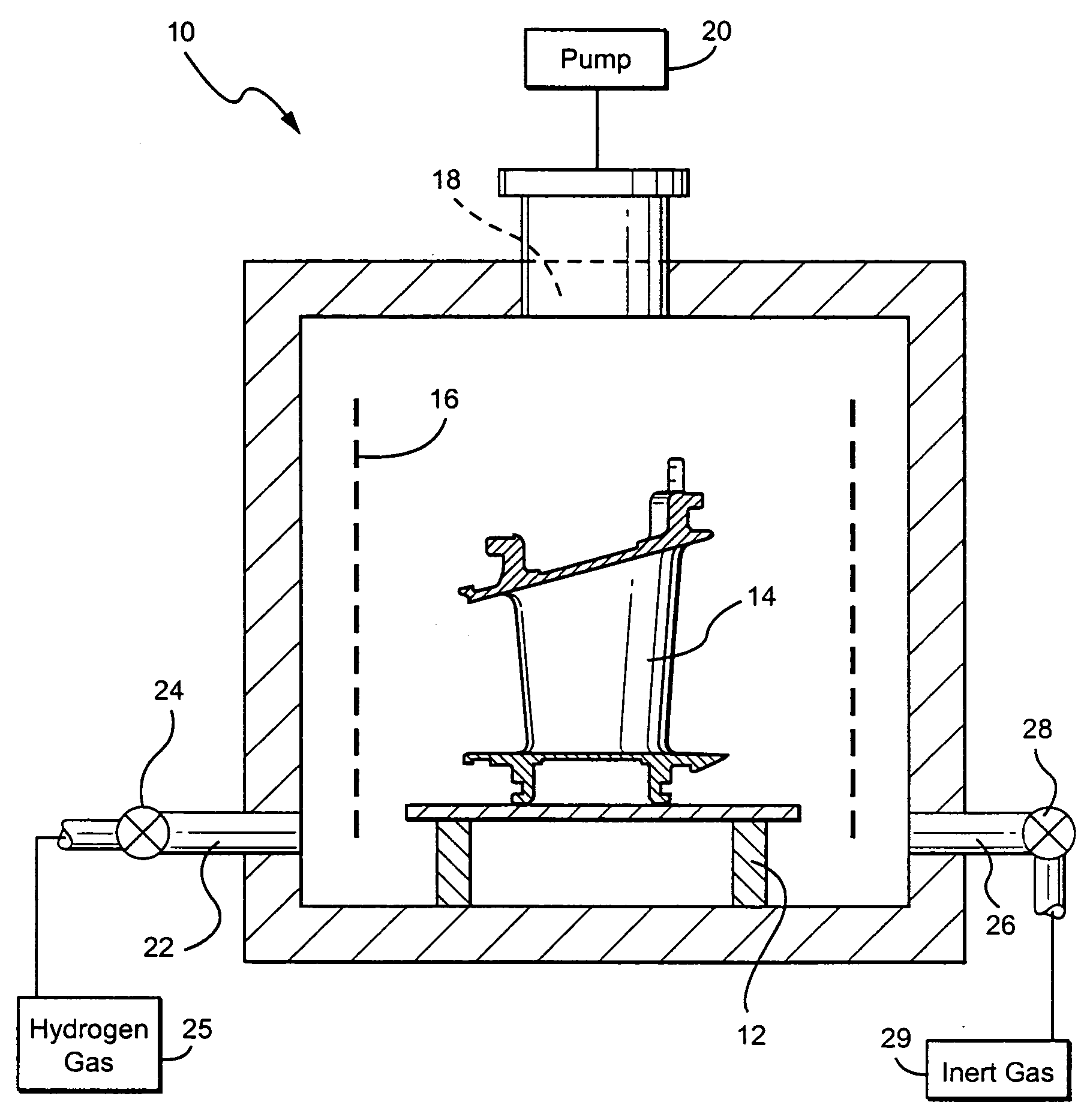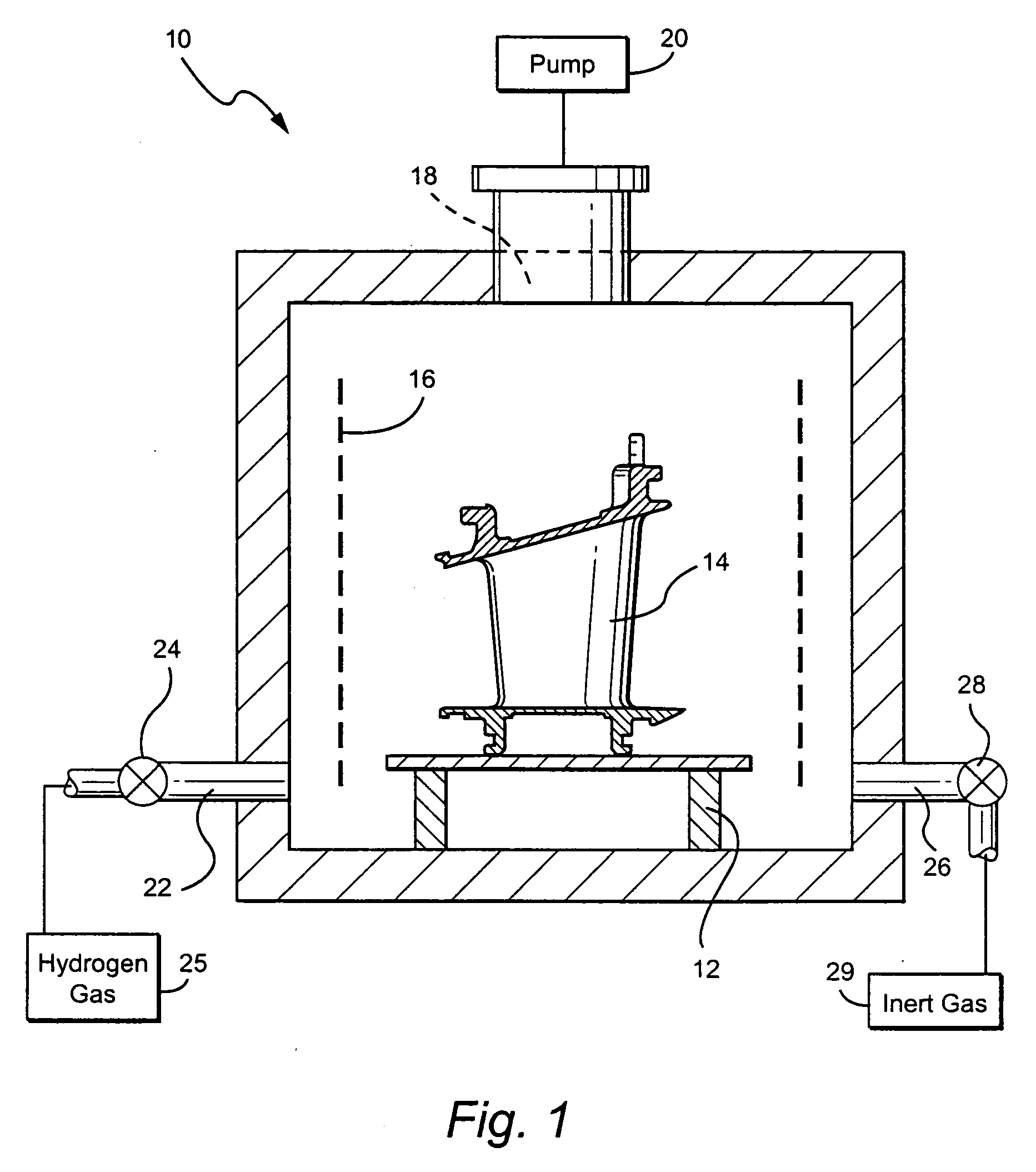Methods of hydrogen cleaning of metallic surfaces
a technology for cleaning metallic surfaces and hydrogen, applied in the direction of cleaning processes and equipment, cleaning liquids, lighting and heating equipment, etc., can solve the problems of low-productivity methods requiring substantial manual labor, not providing dynamic hydrogen gas flow, and developing surface contaminants including surface oxides and surface cracks
- Summary
- Abstract
- Description
- Claims
- Application Information
AI Technical Summary
Benefits of technology
Problems solved by technology
Method used
Image
Examples
Embodiment Construction
[0010] Referring to the drawing figures, there is illustrated a vacuum furnace, generally designated 10, including a support 12 for the article or component 14 which is to be cleaned. In this instance, a nozzle 14 for a gas turbine is illustrated on support 12. The component is formed of a metallic material and the cleaning process hereof is particularly applicable to components formed of a cobalt-based alloy, stainless steel or mild steel, such as nozzle 14. It will be appreciated that the component 14 to be cleaned has been in service and may have surface contaminants including oxides and / or surface cracks. Those surfaces require cleaning before a refurbishing process can go forward, e.g., before an ADH process can be employed to repair or refurbish the surfaces.
[0011] The vacuum furnace 10 includes a plurality of radiant heating elements 16 for radiantly heating the component(s), e.g., the nozzle 14 disposed within the vacuum furnace. The vacuum furnace 10 also includes an outle...
PUM
| Property | Measurement | Unit |
|---|---|---|
| temperature | aaaaa | aaaaa |
| time period | aaaaa | aaaaa |
| temperature | aaaaa | aaaaa |
Abstract
Description
Claims
Application Information
 Login to View More
Login to View More - R&D
- Intellectual Property
- Life Sciences
- Materials
- Tech Scout
- Unparalleled Data Quality
- Higher Quality Content
- 60% Fewer Hallucinations
Browse by: Latest US Patents, China's latest patents, Technical Efficacy Thesaurus, Application Domain, Technology Topic, Popular Technical Reports.
© 2025 PatSnap. All rights reserved.Legal|Privacy policy|Modern Slavery Act Transparency Statement|Sitemap|About US| Contact US: help@patsnap.com


